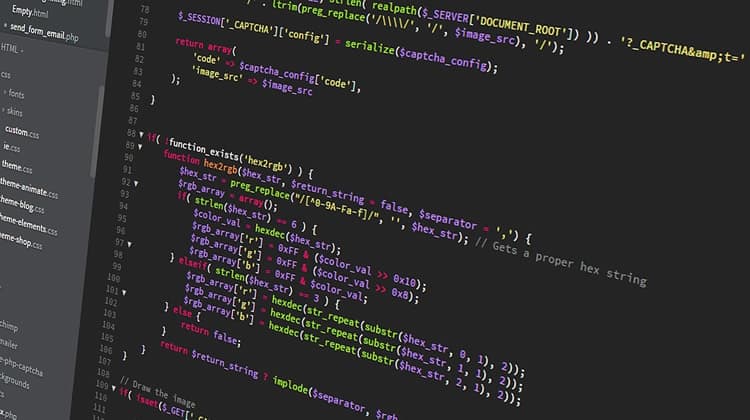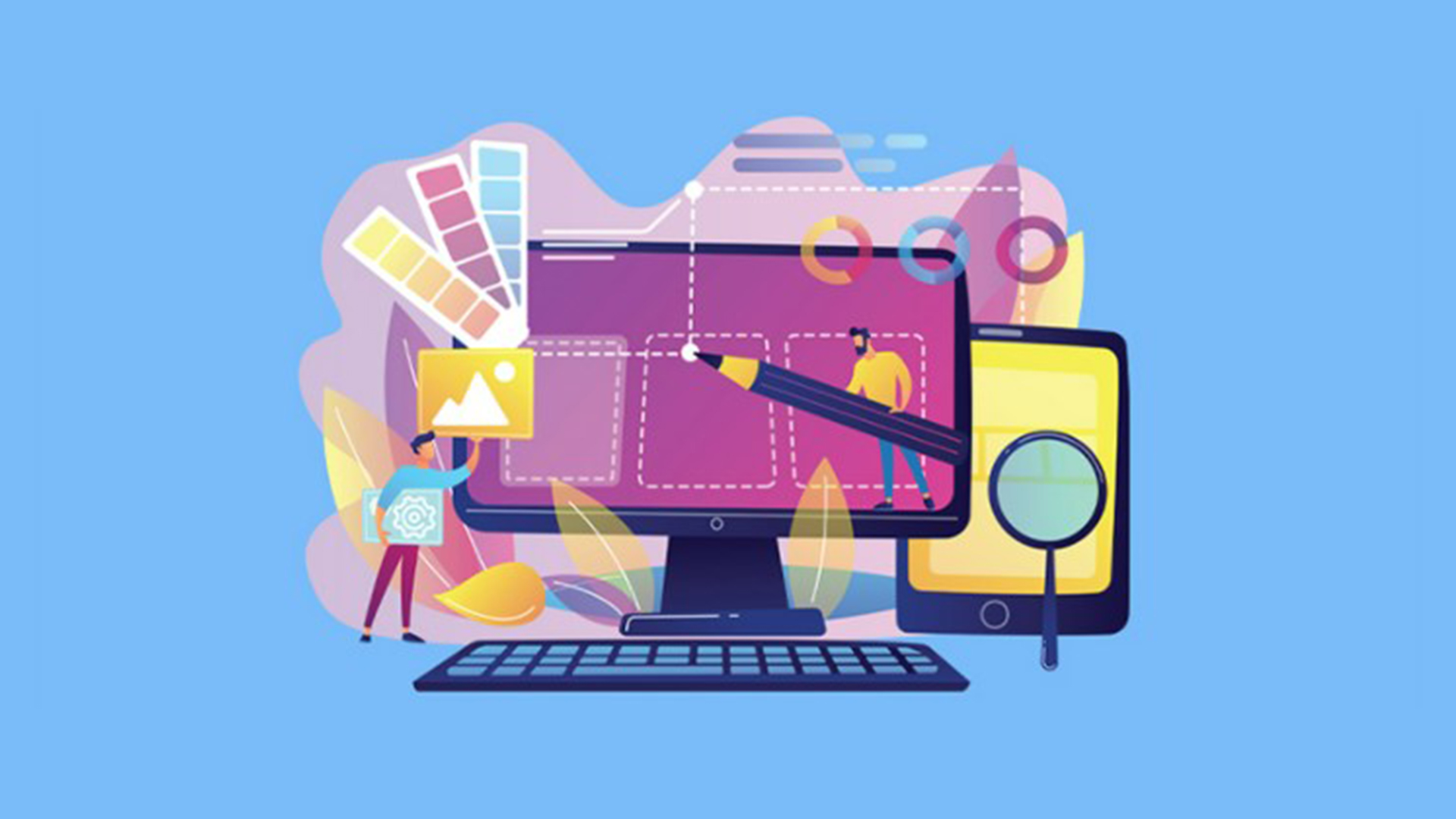All Categories
Featured
Table of Contents
- – Top Web Design Agencies Ranked - 2022 Reviews ...
- – What Is A Web Designer? (2022 Guide) - Brains...
- – St Louis Seo Company - St Louis Web Design An...
- – Web Development Bachelor's Degree - Full Sail...
- – What Can I Do With A Web Design And Developme...
- – Mrw Web Design - Wordpress Websites For Nonpr...
- – Web Design And Engineering Major - Santa Cla...
- – Lifted Logic: Web Design In Kansas City - Se...
- – Top Web Design Companies - Find Web Designer...
- – Modern Website Designs - Best Web Page Desig...
- – Web Design Services + Website Development Ag...
Top Web Design Agencies Ranked - 2022 Reviews - Clutch.co Tips and Tricks:
Quick summary Use and the energy, not the visual style, identify the success or failure of a website. Given that the visitor of the page is the only person who clicks the mouse and therefore decides whatever, user-centric style has developed as a basic approach for effective and profit-oriented web design - web design frederick md.
and the utility, not the visual design, determine the success or failure of a website. Since the visitor of the page is the only individual who clicks the mouse and for that reason decides whatever, user-centric style has ended up being a standard method for successful and profit-oriented web design. If users can't utilize a function, it may as well not exist.
g. where the search box must be put) as it has actually already been done in a variety of articles; rather we concentrate on the approaches which, used correctly, can result in more advanced design decisions and simplify the procedure of perceiving provided details. Please discover that you might be interested in the usability-related articles we have actually released prior to: Concepts Of Good Website Style And Effective Website Design Standards, In order to use the principles correctly we initially require to understand how users connect with websites, how they believe and what are the fundamental patterns of users' habits.
What Is A Web Designer? (2022 Guide) - Brainstation® Tips and Tricks:
Visitors glimpse at each brand-new page, scan some of the text, and click the first link that catches their interest or vaguely looks like the thing they're trying to find. In reality, there are large parts of the page they do not even take a look at. Many users look for something fascinating (or helpful) and clickable; as quickly as some promising candidates are discovered, users click.
If a page supplies users with premium material, they want to compromise the material with ads and the style of the website. This is the factor why not-that-well-designed sites with high-quality content gain a great deal of traffic over years. Content is more crucial than the design which supports it.

Users do not check out, they scan. Notification how "hot" areas abrupt in the middle of sentences. This is common for the scanning process. Very basic principle: If a site isn't able to satisfy users' expectations, then designer failed to get his job done properly and the company loses cash. The greater is the cognitive load and the less user-friendly is the navigation, the more willing are users to leave the website and search for alternatives.
St Louis Seo Company - St Louis Web Design And Internet ... Tips and Tricks:
Neither do they scan website in a linear style, going sequentially from one site section to another one. Instead users satisfice; they choose the first affordable choice. As soon as they find a link that appears like it may lead to the objective, there is an excellent opportunity that it will be instantly clicked.
It doesn't matter to us if we comprehend how things work, as long as we can utilize them. If your audience is going to imitate you're designing signboard, then design great signboards." Users wish to have the ability to manage their web browser and count on the consistent information discussion throughout the site.
If the navigation and site architecture aren't instinctive, the variety of concern marks grows and makes it harder for users to understand how the system works and how to obtain from point A to point B. A clear structure, moderate visual clues and easily identifiable links can assist users to discover their course to their goal.
Web Development Bachelor's Degree - Full Sail University Tips and Tricks:

claims to be "beyond channels, beyond products, beyond distribution". What does it suggest? Since users tend to explore sites according to the "F"-pattern, these three declarations would be the very first components users will see on the page once it is packed. The style itself is simple and user-friendly, to understand what the page is about the user requires to browse for the answer.
As soon as you have actually attained this, you can communicate why the system is useful and how users can benefit from it. Don't Waste Users' Persistence, In every task when you are going to use your visitors some service or tool, try to keep your user requirements very little.
Novice visitors want to, not filling long web kinds for an account they might never ever use in the future. Let users check out the website and find your services without forcing them into sharing personal information. It's not reasonable to require users to go into an e-mail address to test the function.
What Can I Do With A Web Design And Development Degree? Tips and Tricks:
And that's what you want your users to feel on your web site. The registration can be done in less than 30 seconds as the form has horizontal orientation, the user does not even need to scroll the page.
A user registration alone suffices of an obstacle to user navigation to minimize incoming traffic. 3. Manage To Focus Users' Attention, As websites offer both static and dynamic material, some elements of the user interface bring in attention more than others do. Undoubtedly, images are more attractive than the text just as the sentences marked as strong are more appealing than plain text.
Focusing users' attention to particular locations of the site with a moderate usage of visual elements can assist your visitors to receive from point A to point B without thinking of how it actually is supposed to be done. The less question marks visitors have, the they have and the more trust they can establish towards the business the site represents.
Mrw Web Design - Wordpress Websites For Nonprofits ... Tips and Tricks:
4. Pursue Feature Direct exposure, Modern web designs are usually criticized due to their approach of guiding users with aesthetically appealing 1-2-3-done-steps, big buttons with visual impacts and so on. However from the style point of view these components in fact aren't a bad thing. On the contrary, such as they lead the visitors through the site content in a really basic and easy to use way.
The website has 9 main navigation alternatives which are noticeable at the very first glance. What matters is that the content is well-understood and visitors feel comfortable with the method they engage with the system.
Instead a cost: simply what visitors are looking for. An optimum option for efficient writing is touse brief and succinct phrases (come to the point as rapidly as possible), use scannable design (classify the content, use numerous heading levels, use visual components and bulleted lists which break the circulation of uniform text blocks), use plain and unbiased language (a promotion does not require to sound like ad; provide your users some affordable and objective reason why they need to use your service or remain on your website)6.
Web Design And Engineering Major - Santa Clara University Tips and Tricks:
Users are rarely on a website to delight in the style; in addition, for the most part they are trying to find the details regardless of the style - web design frederick md. Pursue simplicity rather of intricacy. From the visitors' point of view, the very best website design is a pure text, with no ads or more content blocks matching exactly the question visitors used or the content they have actually been trying to find.
Finch plainly presents the info about the site and offers visitors a choice of alternatives without overcrowding them with unnecessary content. Not just does it help to for the visitors, however it makes it possible to view the info provided on the screen.
Complex structures are more difficult to read, scan, analyze and work with. If you have the option in between separating 2 style segments by a visible line or by some whitespace, it's usually better to utilize the whitespace service. (Simon's Law): the better you handle to offer users with a sense of visual hierarchy, the easier your material will be to view.
Lifted Logic: Web Design In Kansas City - Seo - Website ... Tips and Tricks:
The exact same conventions and rules ought to be applied to all elements.: do the most with the least amount of hints and visual aspects. 4 significant points to be considered: simplicity, clearness, distinctiveness, and focus. Simplicity includes only the elements that are essential for interaction. Clearness: all elements must be developed so their significance is not ambiguous.
Conventions Are Our Friends, Traditional design of site aspects doesn't result in a boring website. As they lower the finding out curve, the need to figure out how things work. It would be an usability headache if all sites had different visual discussion of RSS-feeds. That's not that different from our routine life where we tend to get used to basic concepts of how we organize data (folders) or do shopping (positioning of products).
understand what they're anticipating from a website navigation, text structure, search positioning etc. A case in point from usability sessions is to equate the page in Japanese (assuming your web users do not understand Japanese, e. g. with Babelfish) and provide your usability testers with a task to find something in the page of various language.
Top Web Design Companies - Find Web Designers Here Tips and Tricks:
Test Early, Test Typically, This so-called TETO-principle needs to be used to every web style job as use tests frequently provide into significant issues and problems related to a provided layout. Test not too late, not too little and not for the wrong reasons.
Some crucial points to keep in mind: according to Steve Krug, and testing one user early in the job is better than testing 50 near the end. Accoring to Boehm's first law, mistakes are most frequent throughout requirements and style activities and are the more pricey the later on they are gotten rid of.
That means that you create something, test it, repair it and after that check it once again. There may be problems which haven't been found throughout the very first round as users were practically blocked by other problems. usability tests. Either you'll be pointed to the problems you have or you'll be indicated the absence of significant style defects which is in both cases an useful insight for your job.
Modern Website Designs - Best Web Page Designers Tips and Tricks:

This holds for designers. After you've dealt with a website for couple of weeks, you can't observe it from a fresh point of view anymore. You understand how it is developed and for that reason you know precisely how it works you have the wisdom independent testers and visitors of your site would not have.
It can be linked to other locations such as graphic style, user experience, and multimedia arts, however is more appropriately seen from a technological standpoint. It has become a big part of people's everyday lives. It is hard to imagine the Web without animated graphics, various designs of typography, background, videos and music.

During 1991 to 1993 the Web was born. Text-only pages could be viewed using a simple line-mode internet browser. In 1993 Marc Andreessen and Eric Bina, produced the Mosaic web browser. At the time there were multiple web browsers, however the majority of them were Unix-based and naturally text heavy. There had been no integrated technique to graphic style elements such as images or sounds.
Web Design Services + Website Development Agency Tips and Tricks:
The W3C was created in October 1994 to "lead the Web to its full potential by developing typical protocols that promote its evolution and ensure its interoperability." This dissuaded any one business from monopolizing a propriety web browser and programs language, which might have altered the result of the Web as a whole.
As this has actually happened the innovation of the web has also moved on. There have actually likewise been significant changes in the method people utilize and access the web, and this has actually changed how websites are created.
Learn more about Lovell Media Group LLC or TrainACETable of Contents
- – Top Web Design Agencies Ranked - 2022 Reviews ...
- – What Is A Web Designer? (2022 Guide) - Brains...
- – St Louis Seo Company - St Louis Web Design An...
- – Web Development Bachelor's Degree - Full Sail...
- – What Can I Do With A Web Design And Developme...
- – Mrw Web Design - Wordpress Websites For Nonpr...
- – Web Design And Engineering Major - Santa Cla...
- – Lifted Logic: Web Design In Kansas City - Se...
- – Top Web Design Companies - Find Web Designer...
- – Modern Website Designs - Best Web Page Desig...
- – Web Design Services + Website Development Ag...
Latest Posts
Why Web Design Is Dead - - Ux Magazine Tips and Tricks:
The Top 10 Most Important Elements Of A Website Design Tips and Tricks:
34 Of The Best Website Designs To Inspire You In 2022 Tips and Tricks:
More
Latest Posts
Why Web Design Is Dead - - Ux Magazine Tips and Tricks:
The Top 10 Most Important Elements Of A Website Design Tips and Tricks:
34 Of The Best Website Designs To Inspire You In 2022 Tips and Tricks: